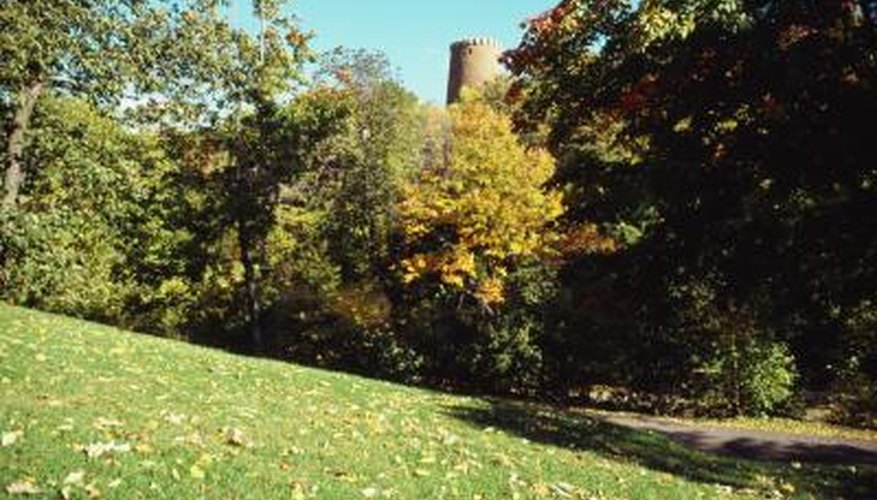What goes up must come down, but sometimes what goes up stays there long enough for you to measure its height. A theodolite is a simple device for doing exactly that: measuring the height of objects like trees and even model rocket flights. A theodolite measures the angle formed by the elevation of a tree, for example, and the point on the ground at which you make your measurement with the theodolite. Using trigonometry -- the tangent of the angle you measure will equal the height of the tree divided by your distance from the base of the tree -- you can find the height of the tree.
- What goes up must come down, but sometimes what goes up stays there long enough for you to measure its height.
- A theodolite measures the angle formed by the elevation of a tree, for example, and the point on the ground at which you make your measurement with the theodolite.
Place a plastic protractor on a rectangular piece of cardboard so that the straight edge of the protractor lines up with the long edge of the piece of cardboard (see Resources).
Push a 3.8 cm (1 1/2 inch) finishing nail through the small hole in the base of the protractor. Keep pushing until the nail pierces the piece of cardboard behind the protractor.
Push the nail until 1.3 cm (1/2-inch) of the nail is protruding through the cardboard.
Secure the end of the finishing nail with a binder clip by placing the clip over the end of the nail that's protruding from the cardboard side of your theodolite; this will hold it in place.
Tie a 30 cm (12 inch) piece of cotton to the finishing nail on the protractor side of your theodolite.
Tie a 226 g (1/2 oz) fishing weight to the other end of the 30 cm (12 inch) piece of thread.
Note that the thread of your theodolite now indicates anglural measurements on the protractor when you tilt the theodolite.
